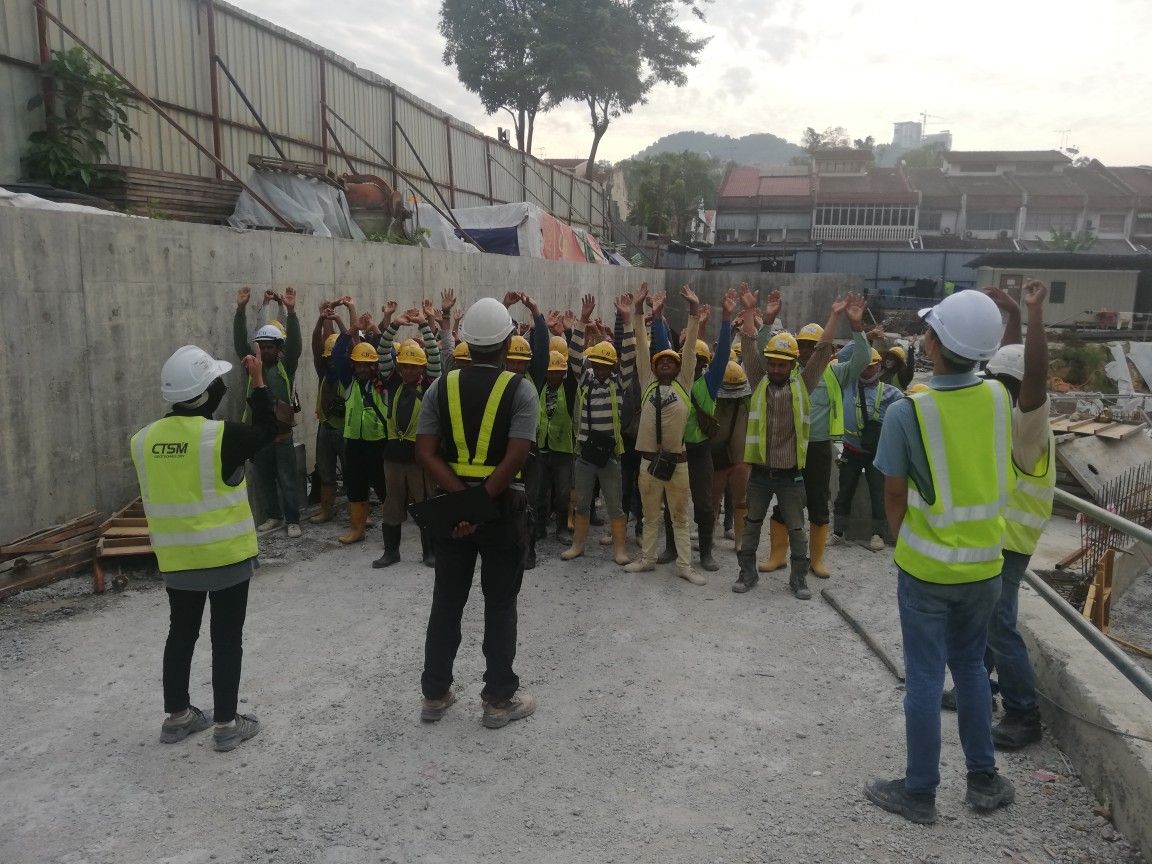Securing a visa sponsorship job in Canada is a goal for many individuals seeking better opportunities and a higher quality of life. Canada’s diverse economy, inclusive culture, and immigration-friendly policies make it an attractive destination for skilled workers worldwide. However, landing a job with visa sponsorship can be a daunting process requiring preparation, determination, and strategic planning. This comprehensive guide will walk you through the steps to secure a visa sponsorship job in Canada, ensuring your efforts are directed effectively.
1. Understand the Concept of Visa Sponsorship
Visa sponsorship is a process where a Canadian employer supports a foreign worker’s application for a work permit or permanent residency. This sponsorship is essential when a worker’s skills are highly specialized, in demand, or cannot be easily sourced within Canada’s local labor market. By sponsoring a worker, the employer takes on significant legal and administrative responsibilities, including compliance with Canadian labor laws, ensuring the job offer meets government regulations, and demonstrating that hiring a foreign worker will not adversely affect opportunities for Canadian citizens or permanent residents.
Employers typically turn to visa sponsorship when they are unable to find suitable candidates locally. This often happens in industries experiencing labor shortages, such as healthcare, technology, agriculture, and skilled trades. Sponsorship is not just about providing a job offer; it also includes assistance with the immigration process, such as submitting necessary documentation and navigating the rules of Canada’s immigration system.
In Canada, visa sponsorship is closely tied to programs like the Temporary Foreign Worker Program (TFWP) and the International Mobility Program (IMP). These programs provide pathways for employers to hire foreign talent to address specific labor needs:
- Temporary Foreign Worker Program (TFWP): This program requires employers to obtain a Labor Market Impact Assessment (LMIA), a document that proves hiring a foreign worker is essential and that no qualified Canadians are available for the position. The LMIA is a critical step in the sponsorship process and involves demonstrating efforts to recruit domestically, such as advertising the position locally and nationally.
- International Mobility Program (IMP): Unlike the TFWP, the IMP allows employers to hire foreign workers without an LMIA. This exemption typically applies to situations where the hire benefits Canada in cultural, economic, or other significant ways. Examples include intra-company transfers, jobs under trade agreements like the Canada-United States-Mexico Agreement (CUSMA), or positions that contribute to Canada’s international commitments.
For job seekers, understanding these programs and their requirements is crucial when targeting visa sponsorship opportunities. Researching industries with high demand for foreign workers and tailoring applications to meet the needs of Canadian employers can significantly improve the chances of securing a sponsorship.
2. Identify In-Demand Jobs and Skills
A thorough understanding of the Canadian labor market is vital for job seekers aiming to secure visa sponsorship. Canada regularly experiences labor shortages in several key industries, creating opportunities for skilled foreign workers. High-demand sectors often include healthcare, information technology, engineering, construction, agriculture, hospitality, and skilled trades. These fields frequently seek international talent to address gaps that cannot be filled locally.
To identify in-demand jobs, familiarize yourself with Canada’s National Occupation Classification (NOC) system. The NOC provides a comprehensive framework that categorizes jobs based on skill levels, required qualifications, and job responsibilities. Each job is assigned a unique code, which can help you determine whether your skills and experience align with roles that are currently in demand. For instance, NOC codes for jobs like registered nurses, software developers, electricians, and farm supervisors are frequently associated with high-demand roles.
Moreover, programs such as the Global Talent Stream (GTS) and the Atlantic Immigration Pilot (AIP) are tailored to address labor shortages in specific industries and regions:
- Global Talent Stream (GTS): This program is part of the Temporary Foreign Worker Program and is designed to facilitate the hiring of highly skilled workers in tech and STEM fields. Occupations like computer engineers, IT analysts, and software developers often fall under the GTS, offering expedited processing times for work permits.
- Atlantic Immigration Pilot (AIP): Targeting Canada’s Atlantic provinces—Nova Scotia, New Brunswick, Prince Edward Island, and Newfoundland and Labrador—this program focuses on recruiting foreign workers for essential roles in industries like healthcare, hospitality, and agriculture. It’s an excellent pathway for workers who are open to relocating to less-populated regions of Canada.
Conducting research on these programs and industry trends can help you tailor your job search. Websites like Job Bank Canada, Indeed, and the Canada Immigration website provide up-to-date information on labor shortages and employer requirements. Additionally, networking on platforms like LinkedIn and attending virtual job fairs can connect you directly with Canadian employers looking for talent in your field.
By aligning your skills and qualifications with in-demand roles and focusing on industries actively seeking foreign workers, you increase your chances of finding a sponsoring employer willing to support your visa application.
3. Tailor Your Resume and Cover Letter for the Canadian Market
Creating a professional resume and cover letter tailored to Canadian standards is an essential step in securing a job with visa sponsorship. Canadian employers value concise, well-structured documents that effectively showcase your skills, experience, and achievements, making it easier for them to assess your suitability for the role. Here’s how to align your application materials with Canadian expectations:
Crafting Your Resume
Your resume should adhere to the following Canadian standards:
- Clear and Professional Format:
- Use a clean, easy-to-read layout with consistent fonts and spacing.
- Limit the document to 1-2 pages, focusing on the most relevant experience and skills.
- Summary or Objective Statement:
- Begin with a short, impactful summary highlighting your key skills, achievements, and career objectives. For instance: “Experienced Software Developer with 5+ years of expertise in full-stack development, specializing in creating scalable web solutions for global clients.”
- Work Experience:
- Provide detailed descriptions of your roles and responsibilities in reverse chronological order.
- Use bullet points to highlight specific tasks and achievements, starting each point with an action verb (e.g., developed, implemented, managed).
- Quantifiable Accomplishments:
- Include metrics where possible to demonstrate the impact of your work. For example: “Increased website traffic by 35% through optimization strategies” or “Led a team of 10 to complete a project two weeks ahead of schedule.”
- Certifications and Training:
- Highlight relevant certifications, such as industry-recognized qualifications or Canadian-specific credentials like language proficiency tests (e.g., IELTS) or job-related courses.
- Avoid Personal Information:
- Exclude details like your photo, marital status, age, or nationality, as these are not required and may lead to bias.
Writing Your Cover Letter
The cover letter is your opportunity to personalize your application and demonstrate your fit for the role. It should:
- Address the Employer:
- Use a formal salutation, addressing the hiring manager by name if possible. For example, “Dear [Hiring Manager’s Name]”.
- Highlight Your Suitability:
- Clearly explain why you are the ideal candidate by connecting your skills and experience to the job requirements.
- Mention specific accomplishments that demonstrate your ability to succeed in the role.
- Express Willingness to Relocate:
- Show enthusiasm about moving to Canada and adapting to a new work environment. For instance: “I am excited about the opportunity to contribute to your organization and am fully prepared to relocate to Canada to join your team.”
- Emphasize International Experience:
- Highlight any prior international work or collaborations, showcasing your adaptability and cross-cultural skills.
- Professional Closing:
- Conclude with a call to action, such as expressing interest in an interview or further discussion, and use a polite sign-off (e.g., “Sincerely,”).
Final Touches
Before submitting, review your resume and cover letter carefully to ensure there are no errors in grammar, spelling, or formatting. Use tools like Grammarly or enlist a trusted friend to proofread your documents. A polished and professional application increases your chances of standing out to Canadian employers and advancing toward securing a visa sponsorship job.
4. Leverage Job Portals and Networking
Job portals and networking are powerful tools for finding visa sponsorship opportunities in Canada. Websites like Job Bank, Indeed Canada, Workopolis, and Glassdoor list thousands of job openings. Some platforms, like LinkedIn, also allow you to directly connect with employers and recruiters. Optimize your LinkedIn profile to reflect your skills and experiences and actively engage with professionals in your industry.
Attend virtual and in-person networking events, job fairs, and industry conferences. Networking can lead to valuable referrals and insights into companies willing to sponsor foreign workers. Don’t hesitate to reach out to alumni from your educational institutions or professionals in your field who have successfully migrated to Canada. Building connections can give you a competitive edge.
5. Apply Through Provincial Nominee Programs (PNPs)
Canada’s Provincial Nominee Programs (PNPs) provide a valuable pathway to secure a visa sponsorship job and potentially gain permanent residency. Each province and territory in Canada operates its own PNP, tailored to address its unique labor market needs. These programs are designed to attract skilled workers who can contribute to the local economy and fill critical gaps in the workforce.
Understanding PNPs
PNPs allow provinces and territories to nominate foreign workers for permanent residency based on their skills, experience, and job offers. While each PNP has its own set of eligibility criteria and processes, having a job offer from an employer in the province significantly strengthens your application. Some provinces also have specific streams targeting high-demand sectors, making it crucial to align your skills with their labor needs.
Examples of Prominent PNPs
- Ontario Immigrant Nominee Program (OINP):
- Ontario is known for its demand in tech, healthcare, and business-related fields.
- The OINP has streams like the Human Capital Priorities Stream, which often targets occupations such as software developers, registered nurses, and financial analysts.
- British Columbia Provincial Nominee Program (BCPNP):
- British Columbia frequently seeks skilled workers in technology, healthcare, and skilled trades.
- The Tech Pilot stream is a notable option for IT professionals, offering expedited processing for candidates with job offers in eligible tech occupations.
- Alberta Advantage Immigration Program (AAIP):
- Alberta’s economy relies heavily on agriculture, engineering, and energy sectors, making these areas key targets for their PNP.
- Atlantic Immigration Program (AIP):
- While technically not a PNP, the AIP involves Atlantic provinces—Nova Scotia, New Brunswick, Newfoundland and Labrador, and Prince Edward Island—and focuses on addressing labor shortages in healthcare, hospitality, and skilled trades.
- Manitoba Provincial Nominee Program (MPNP):
- Manitoba emphasizes agriculture, manufacturing, and healthcare, with specific pathways for workers who have a job offer or family connections in the province.
Steps to Apply Through PNPs
- Identify the Right PNP:
- Research the provinces and territories that align with your skills and industry. Use official government websites for up-to-date information on their in-demand occupations and eligibility criteria.
- Secure a Job Offer:
- Many PNPs require a valid job offer from an employer in the province. Networking and applying to local employers through platforms like Job Bank Canada and provincial job boards can help you secure an offer.
- Check Eligibility:
- Review the specific requirements of your chosen PNP, such as language proficiency, educational credentials, and work experience.
- Submit an Expression of Interest (EOI):
- For PNPs that use an EOI system, register your interest by creating a profile and providing details about your qualifications and job offer.
- Receive a Nomination:
- If selected, the province will issue a nomination certificate, which you can use to apply for permanent residency through the federal Express Entry system or directly to Immigration, Refugees and Citizenship Canada (IRCC).
- Follow Up with Permanent Residency Application:
- A PNP nomination boosts your Comprehensive Ranking System (CRS) score if you’re applying through Express Entry, increasing your chances of receiving an Invitation to Apply (ITA) for permanent residency.
Tips for Success
- Stay updated on changes to PNP streams and occupation lists, as they frequently adjust to meet labor demands.
- Be proactive in your job search, focusing on provinces with active recruitment efforts in your field.
- Ensure all your documents, such as educational credentials and language test results, are valid and meet Canadian standards.
By leveraging PNPs, you can increase your chances of not only securing a visa sponsorship job but also achieving long-term residency in Canada.
6. Understand the Labor Market Impact Assessment (LMIA) Process
Many Canadian employers require an LMIA to hire a foreign worker. The LMIA is a document issued by Employment and Social Development Canada (ESDC) that assesses the impact of hiring a foreign worker on the Canadian labor market. A positive LMIA indicates that hiring a foreign worker is necessary and that no Canadian citizen or permanent resident is available to fill the position.
For job seekers, understanding the LMIA process can help you identify employers who are already familiar with hiring foreign workers. Be prepared to provide supporting documents and information to your prospective employer to facilitate the LMIA application. Companies that have previously sponsored workers are often more willing to repeat the process.
7. Enhance Your Qualifications and Credentials
Possessing the right qualifications and credentials is essential to stand out in the competitive Canadian job market, especially when pursuing visa sponsorship opportunities. Employers in Canada value candidates whose skills align with Canadian standards and industry-specific requirements. Enhancing your qualifications demonstrates not only your expertise but also your commitment to integrating into the Canadian workforce.
Researching Canadian Standards
Begin by understanding the specific qualifications and certifications required for your profession in Canada. Many industries have regulatory bodies or associations that govern professional standards and licensing. Ensuring your credentials meet these requirements is a crucial step toward securing a job and obtaining sponsorship.
Credential Recognition
Certain professions require foreign credentials to be assessed and recognized by a Canadian authority. The process involves verifying your education, work experience, and certifications against Canadian standards. Here are examples of credential requirements for specific fields:
- Healthcare Professionals:
- Physicians, nurses, and other healthcare workers must pass exams and obtain licenses from regulatory bodies such as the Medical Council of Canada (MCC) or the College of Nurses of Ontario (CNO).
- International medical graduates may need to complete additional assessments or residency programs to qualify for practice.
- Engineers:
- Engineers must obtain certification from provincial or territorial engineering associations, such as Professional Engineers Ontario (PEO).
- You may need to submit proof of education, pass the Professional Practice Examination (PPE), and gain local work experience.
- Tradespeople:
- For skilled trades, meeting the standards of the Red Seal Program is often necessary. This program assesses and certifies tradespeople across Canada, ensuring their skills meet national benchmarks.
- Teachers:
- Educators may need certification from a provincial education board, such as the Ontario College of Teachers or equivalent organizations in other provinces.
Upgrading Your Skills
Investing in professional development can make you a more attractive candidate. Consider the following strategies to enhance your qualifications:
- Online Courses and Certifications:
- Platforms like Coursera, edX, and LinkedIn Learning offer courses tailored to Canadian industry standards.
- Certifications in emerging technologies, leadership, or language proficiency (e.g., IELTS or CELPIP) can strengthen your resume.
- Bridging Programs:
- Many Canadian colleges and universities offer bridging programs designed to help internationally trained professionals adapt to the local job market. These programs may include mentorship, skills training, and networking opportunities.
- Gaining Canadian Work Experience:
- If possible, seek internships, volunteer opportunities, or part-time work in your field. This experience helps build your familiarity with Canadian workplace culture and enhances your employability.
Demonstrating Your Commitment
Highlighting your efforts to meet Canadian standards shows employers that you are serious about your professional growth and integration into the local workforce. Include relevant certifications, training, and credential recognition in your resume and discuss them in your cover letter or interview.
By ensuring your qualifications are up to par and continually enhancing your skills, you increase your competitiveness in the Canadian job market, improving your chances of securing a visa sponsorship job.
8. Utilize Immigration Consultants and Agencies Wisely
Immigration consultants and agencies can be a valuable resource when navigating the complexities of securing a visa sponsorship job and completing the Canadian immigration process. They offer expertise in understanding immigration pathways, application requirements, and job search strategies. However, it is essential to approach this option cautiously to ensure you engage with reputable and authorized professionals.
Verifying Consultant Credentials
Canada regulates immigration consultants through the College of Immigration and Citizenship Consultants (CICC). Only licensed consultants, also known as Regulated Canadian Immigration Consultants (RCICs), are authorized to provide immigration advice and services. To verify a consultant’s credentials:
- Check their license status on the official CICC website.
- Review their track record, client testimonials, and success stories.
- Avoid consultants who make unrealistic guarantees, such as securing a job offer without effort or promising faster immigration approvals.
Benefits of Using a Consultant
- Expert Guidance:
- Consultants can help identify suitable immigration programs, such as the Express Entry, Provincial Nominee Programs (PNPs), or employer-specific pathways.
- They provide clarity on eligibility criteria and help prepare your documentation to meet Canadian standards.
- Streamlining the Process:
- Immigration processes can be complex and time-consuming. Consultants can guide you through each step, ensuring all requirements are met and deadlines are adhered to.
- Access to Employer Networks:
- Some reputable agencies may have connections with Canadian employers, giving you access to job opportunities that align with your skills.
Understanding Costs
Engaging a consultant or agency comes with fees that vary depending on the services provided. Typical costs may include:
- Initial consultation fees.
- Charges for preparing and submitting applications.
- Additional services such as job placement assistance.
Before proceeding, request a clear breakdown of all fees and ensure they align with your budget. Be cautious of agencies demanding upfront payments or guaranteeing job offers, as these are common red flags for scams.
Alternatives to Consultants
While consultants can simplify the process, many job seekers successfully secure employment and sponsorship through their own efforts and free resources. Consider these alternatives:
- Job Portals:
- Use platforms like Job Bank Canada, Indeed, and LinkedIn to search for opportunities in your field.
- Immigration Websites:
- The official Government of Canada immigration website provides detailed guidance on visa programs, eligibility, and application processes.
- Networking:
- Connect with employers, industry professionals, and expatriate communities through social media and networking events.
- Non-Profit Organizations:
- Some non-profits and local organizations in Canada offer free or low-cost support for newcomers and skilled workers seeking jobs.
Protecting Yourself from Scams
To avoid fraudulent consultants and agencies:
- Be wary of unsolicited offers promising jobs or visas.
- Avoid agencies that charge exorbitant fees or request payment in cash.
- Never share sensitive personal information unless you are confident in the legitimacy of the consultant.
By choosing immigration consultants and agencies wisely, you can navigate the visa sponsorship process more effectively while avoiding unnecessary risks or expenses. However, remember that with careful research and use of free resources, you can achieve your goals independently as well.
9. Prepare for Interviews and Assessments
Securing a visa sponsorship job often involves multiple interviews and assessments. Canadian employers value candidates who demonstrate strong communication skills, cultural adaptability, and a willingness to contribute to their organization’s success. Prepare for interviews by:
- Researching the company’s background, values, and mission.
- Practicing common interview questions and tailoring your responses to highlight your strengths.
- Showcasing your understanding of Canadian workplace culture.
- Asking insightful questions about the role and organization.
If the interview is conducted virtually, ensure you have a reliable internet connection and a professional setup. Confidence and professionalism are key to making a positive impression.
10. Be Persistent and Stay Informed
Securing a visa sponsorship job in Canada is a challenging yet rewarding journey that demands patience, determination, and adaptability. Rejections and setbacks are natural parts of the process, but persistence is key to overcoming these hurdles and reaching your goal. Staying informed and proactive will significantly enhance your chances of success.
Embrace Persistence
- Keep Applying:
- Treat every application as a learning opportunity. Analyze feedback or reasons for rejection and refine your approach.
- Apply to multiple jobs in your field to increase your chances of finding the right fit.
- Learn from Setbacks:
- View obstacles as opportunities to improve. For example, if a lack of Canadian work experience is a recurring issue, consider volunteering or taking online courses to fill that gap.
- Set Realistic Expectations:
- Understand that securing a job offer and visa sponsorship may take time. Success often comes after several months of consistent effort.
Stay Informed
- Track Immigration Policy Changes:
- Canadian immigration policies and labor market needs are dynamic. Regularly review updates on the official Government of Canada immigration website to stay informed about new programs or changes to existing pathways.
- Monitor Labor Market Trends:
- Identify industries experiencing growth or labor shortages. Use resources like the Job Bank Canada and provincial labor market reports to understand where your skills are most needed.
- Update Your Professional Profiles:
- Regularly refresh your resume, cover letter, and LinkedIn profile to reflect new skills, certifications, or accomplishments.
- Use keywords relevant to your industry to make your profile more discoverable to recruiters.
Leverage Community Support
- Join Online Communities:
- Participate in forums and groups like CanadaVisa Forum, Reddit (r/ImmigrationCanada), and LinkedIn groups related to your profession. These platforms allow you to connect with others navigating the same process, exchange advice, and stay motivated.
- Engage with Professionals:
- Network with Canadian employers, industry leaders, and expats who can provide guidance and share their experiences.
- Seek Mentorship:
- Reach out to mentors in your field who can offer personalized advice on navigating the Canadian job market and securing sponsorship.
Maintain a Positive Mindset
- Celebrate Small Wins:
- Acknowledge milestones, such as completing certifications, passing language tests, or receiving interview invitations.
- Stay Motivated:
- Remind yourself of your ultimate goal and the opportunities that await you in Canada.
- Adapt and Improve:
- If your efforts in one direction are not yielding results, consider exploring new strategies, industries, or regions within Canada.
By being persistent, staying informed, and continually improving your approach, you can navigate the challenges of securing a visa sponsorship job in Canada and move closer to achieving your dreams.
Conclusion
Landing a visa sponsorship job in Canada is a challenging yet achievable goal that requires a combination of preparation, perseverance, and strategic action. By understanding the intricacies of the visa sponsorship process, researching in-demand skills and industries, and tailoring your resume and cover letter to Canadian standards, you set a strong foundation for success.
Leveraging networking opportunities, staying informed about immigration policies and labor market trends, and enhancing your qualifications further increase your appeal to Canadian employers. Persistence and adaptability are crucial as you navigate potential rejections or setbacks.
With determination, a proactive mindset, and the right strategies, your dream of working and living in Canada can move closer to reality, opening doors to a brighter future in one of the world’s most welcoming countries.




